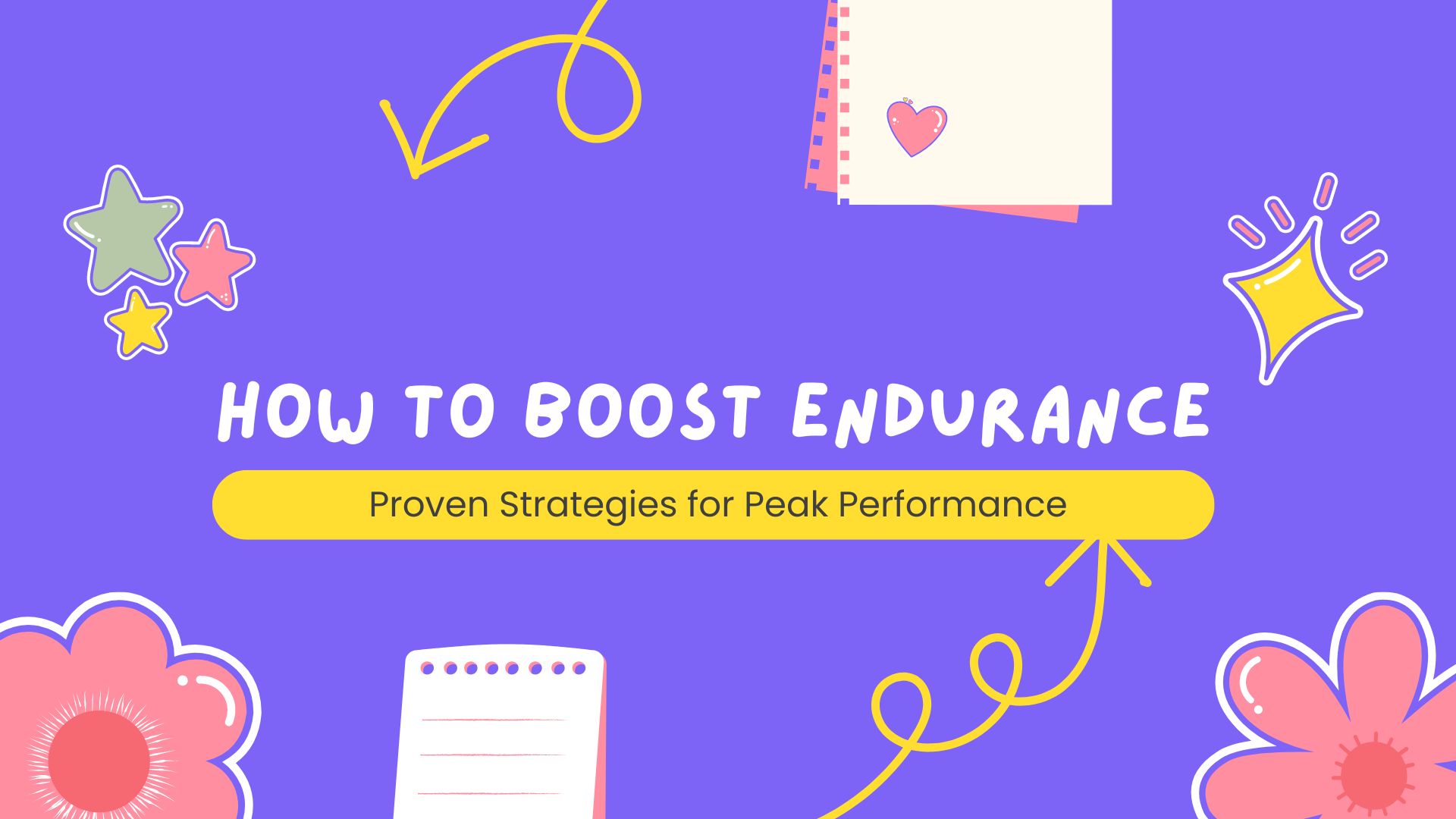
Strength enables one to exert force on a body of resistance for a considerable amount of time, while endurance helps one to continue putting in effort for a long period of time. No matter whether you are a sportsman or a layman wanting to lead a healthier lifestyle, this is also an aspect of fitness. It can also be defined as endurance, which means the power to continue working even when one is exhausted. Energy levels will rise with increased endurance, which in turn improves performance both in sports and everyday life.
What is Endurance?
- Cardiovascular Endurance: The capability of your heart, blood vessels, and lungs to supply oxygen efficiently during prolonged activities involving large muscle groups like running, swimming, or cycling at moderate intensity without fatigue setting in too quickly.
- Muscular Endurance: Refers to how well muscles can repeat contractions over a certain period of time before getting tired out; it enables one to do anything from lifting weights many times without stopping (e.g., rowing) to maintaining good posture throughout the day even when fatigued.
The Role of Stamina in Endurance
- Importance in Exercises: High endurance helps people exercise harder for longer periods so they can become fitter faster. This is very vital, especially for those who participate in marathons, since it enables them to run at higher speeds throughout the race even after feeling tired easily because their stamina levels are still high enough.
- Impact on Daily Energy Levels: Having increased capacity for physical exertion implies higher amounts of energy available each day, which leads to not feeling worn out after work or during regular exercises, thus enhancing general achievements both in sports and daily living activities.
Also read : How do you improve stamina?
How to Improve Endurance: Key Strategies
Following are the key strategies to improve endurance
1) Cardiovascular Training
- Long-Distance Running: Running over long distances will greatly improve your cardiovascular fitness. If you are a beginner, start with short runs and slowly increase the distance as well as intensity.
- High-Intensity Interval Training (HIIT): In this one performs short bursts of hard exercises followed by rest periods or easier activities. It should be noted that this kind of training works wonders on both anaerobic and aerobic endurance.
- Cycling vs. Rowing: While these two activities are good for developing overall stamina in an individual; they tend to work on different sets of muscles. For instance, cycling mainly focuses on strengthening lower limb muscles like quadriceps, hamstrings and calves, while rowing affects most parts including upper body regions such as the back, arms, etc.
2) Strength Training
- High-Volume Weightlifting: It does not only aim at muscle building but also plays a significant role in enhancing endurance levels. This involves lifting moderate weights multiple times throughout several sets whereby each set lasts for about 30 seconds before resting between them.
- Isometric Exercises: These are the types where one has to remain in a specific position without even shifting a limb for a given period of time. They include planks, wall sits, and static lunges, among others, that focus on maintaining tension for longer periods to make overall body power.
3) Endurance-Specific Activities
- Running Hills and Stairs: Whether that’s hills or stairs, running on an incline will increase cardiovascular capacity significantly as well as muscularity. If you add resistance, you are causing your muscles and your heart to work harder, and with increased effort, you also get increased endurance.
- Dancing and Sports: Dancing and playing sports are not only fun but also help build endurance. These activities usually require continuous movement combined with short bursts of high-intensity effort that enhance heart health and coordination while boosting stamina levels, too.
Also read : High-calorie foods for weight gain
Nutrition for Boosting Endurance
Following are the key nutrients for boosting endurance
Key Nutrients:
- Carbohydrates: Carbs are the main supply of the energy required during many hours of exercise. It’s stored in the body tissues, muscles, and liver in the form of glycogen organism, which is used up when exercising.
- Proteins: Cooperating with proteins after a stressful exercise is helpful in repairing muscles as the body contains amino acids that have to repair muscles in the body.
- Fats: First, fats are another energy reserve, which is very useful in case of, for example, marathons or triathlons.
- Pre-Workout & Recovery Meals: With regard to endurance, one factor is to take a lot of water since if one is unable to do this, he or she starts performing poorly, heart rate increases and fatigue sets in early due to the support the body requires to cope with the stress of any form of exercise.
Contact Us
Mental and Lifestyle Factors for Boosting Endurance
Following are the mental and lifestyle factors that boost endurance
- Mindfulness Practices: Some of the forms of training that can be implemented to increase the level of mental resilience include mindfulness training, which embraces part meditation, part yoga, and others. Tricks like these help inculcate mental endurance; one may not slouch during prolonged exercises or during tiresome drills. Also, they assist in lowering possible stress factors that can otherwise harm optimal performance, including stamina.
- Sleep and Recovery: It is always advisable to take enough rest since the aim is to achieve slow but significant improvement of the health status. When one is asleep, not only is one replenishing energy that is required for continuous hard work but also aids in repairing muscle and is thus very useful in attaining more in this aspect.
- Caffeine and Music: Caffeine acts as a stimulant, hence boosting physical activity performance, especially where staying power is involved. It increases alertness, lowering perceived exertion, leading to improved capacity to endure more challenging exercises for longer durations. Similarly, listening to music during workouts can do wonders by enhancing motivation and pushing beyond limits even when feeling tired already. Choose fast-paced tracks that keep you moving all along without losing concentration.
Creating a Balanced Endurance Plan
- Principle of Progressive Overload: This principle is applied in a gradual increase in the level of intensity, frequency, or duration of exercises with the aim of increasing endurance. For instance, the time you take to run a certain distance in the morning, the weight that you use on a barbell, or the number of sets you perform in the gym will progress in due course.
- Monitoring Progress: It is important that you monitor your progress, the frequency, duration, and intensity of your workouts, your energy levels, and the amount of time you take to recover between workouts. It is important to make necessary alterations as one trains depending on the results that the body gives. Other ways include using performance measures such as running for some time or lifting a certain amount of weight and endeavouring to meet such targets.
Conclusion
Persistence is the act that involves physical training, correct nutrition, and mental toughness. You can increase your staying power by utilising these time-tested tips in your workout regimen, hence giving your best in sports and other physically demanding activities as well as daily endeavours. Qua Nutrition has personalised meal plans developed by the best sport nutritionists that are created based on what you want to achieve with your body; this will enable us to help you improve both cardio performance and overall health. So don’t wait any longer–begin now on a path towards better endurance that brings about continuous energy levels throughout the day coupled with higher productivity at every task performed!









